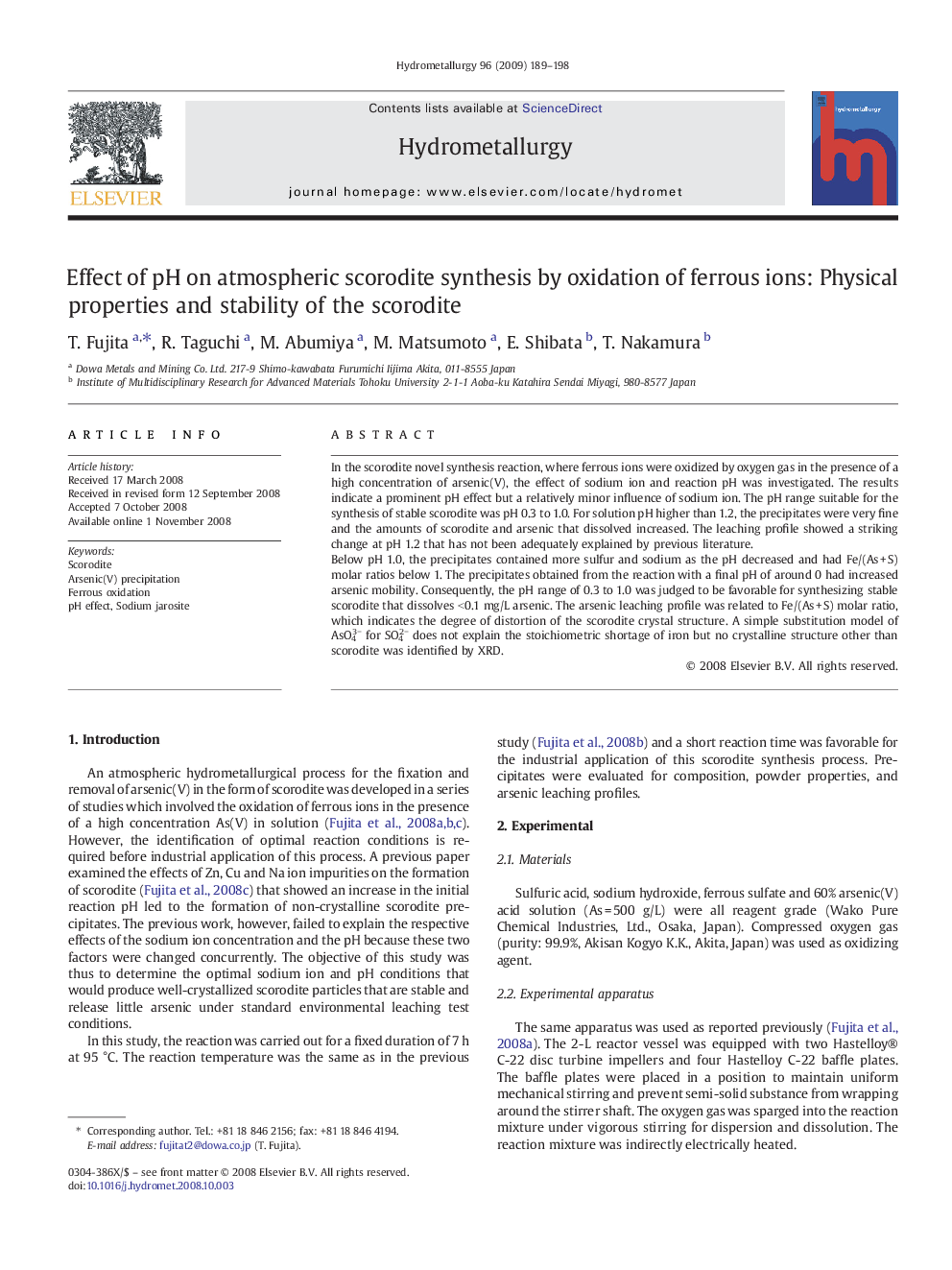| Article ID | Journal | Published Year | Pages | File Type |
|---|---|---|---|---|
| 213137 | Hydrometallurgy | 2009 | 10 Pages |
In the scorodite novel synthesis reaction, where ferrous ions were oxidized by oxygen gas in the presence of a high concentration of arsenic(V), the effect of sodium ion and reaction pH was investigated. The results indicate a prominent pH effect but a relatively minor influence of sodium ion. The pH range suitable for the synthesis of stable scorodite was pH 0.3 to 1.0. For solution pH higher than 1.2, the precipitates were very fine and the amounts of scorodite and arsenic that dissolved increased. The leaching profile showed a striking change at pH 1.2 that has not been adequately explained by previous literature.Below pH 1.0, the precipitates contained more sulfur and sodium as the pH decreased and had Fe/(As + S) molar ratios below 1. The precipitates obtained from the reaction with a final pH of around 0 had increased arsenic mobility. Consequently, the pH range of 0.3 to 1.0 was judged to be favorable for synthesizing stable scorodite that dissolves < 0.1 mg/L arsenic. The arsenic leaching profile was related to Fe/(As + S) molar ratio, which indicates the degree of distortion of the scorodite crystal structure. A simple substitution model of AsO43− for SO42− does not explain the stoichiometric shortage of iron but no crystalline structure other than scorodite was identified by XRD.
